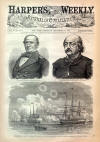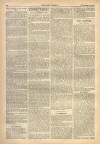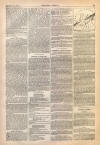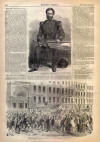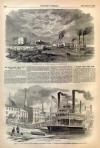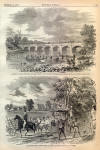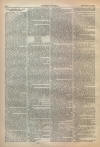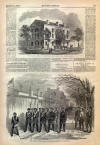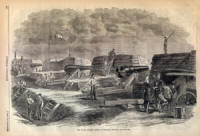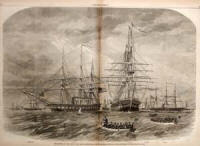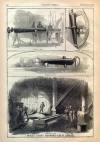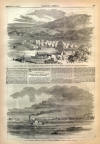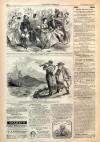The Battle of Summersville
|
|
This Site:
|
SEPTEMBER 14, 1861.] HARPER'S WEEKLY. 589 COLONEL TYLER'S CAMP, NEAR SUMMERSVILLE, VIRGINIA, SCENE OF THE FIGHT OF AUGUST 26.—[SKETCHED BY A MEMBER OF HIS REGIMENT.]THE FIGHT AT SUMMERSVILLE.WE illustrate on this page the Camp occupied by Colonel Tyler, near Summersville, Virginia, where he was surprised by General Floyd on 26th ult. The Tribune's account of the affair was as follows: On the 26th the Seventh Ohio Regiment, Colonel Tyler, while quietly breakfasting, their baggage train being about three mile. in their rear, were suddenly surrounded, near Summersville, by a force of rebels, supposed to be commanded by General Floyd, numbering 3000 infantry, 400 cavalry, and having 10 guns. The attack on the Ohio boys was made on both flanks and in front simultaneously. After a brave fight, lasting some time, Colonel Tyler, finding the enemy too strong for him, ordered the approaching baggage train to be turned back toward Gauley Bridge. The regiment, numbering only 900 men, then fought their way out of the force that with such fearful odds hemmed them in, making terrible havoc among the rebels. The number of our killed we have not learned; the missing number 200. The loss on the side of the rebels must have been very great, as the slaughter was tremendous. DEPARTURE OF REBEL PRISONERS FROM BALTIMORE.WE illustrate, on page 580, an occurrence which has given rise to much talk of late—we mean the RECEPTION AND DEPARTURE OF REBEL PRISONERS from Baltimore for Fortress Monroe. A Baltimore paper (the Sun) thus described the scene : The fact having been announced that a party of Confederate soldiers, captured in Western Virginia, had reached this city, their head-quarters, the Gilmor House, was besieged early yesterday morning by persons who desired to administer to their comfort. Those of the party who were not well supplied with under-clothing were furnished, and those in more limited circumstances found plenty of gold in their pockets without knowing whence it came. They were generally well-educated and refined gentlemen, whose independence of character would forbid their acceptance of aid, but it was pressed upon them and put into their pockets without their knowledge. During the day they were visited by many ladies of the city, each of whom took with her some little present for the comfort or convenience of the soldiers. Most of them visited various sections of the city; accompanied by citizens. At four o'clock in the afternoon the vehicles were drawn up in front of the Gilmor House to convey them to the boat for Old Point, and a large crowd of persons were present to witness their departure. When they emerged from the house the people on the street cheered, and from almost every house in the neighborhood the handkerchiefs of ladies waved from every window. As they passed down Baltimore Street a large throng at the corner of South Street gave them three cheers. From every direction the people flecked to the wharf of the boat, until several thousands were assembled, covering the wharf, the sheds, and all the vessels lying near. The soldiers took their positions on the after-part of the upper saloon deck. At half past four o'clock the lines of the Louisiana were cast off, and as she left the wharf three cheers were given for the departing soldiers. Some of them have friends and relatives in Baltimore, and they expressed themselves delighted at the cordial reception that greeted them on every hand. The public have commented with more freedom than kindness upon General Dix's conduct in this matter. It is said that such celebrations strengthen secession in Baltimore, and that General Banks would never have suffered them while he was in command there. CAPE GIRARDEAU, MISSOURI, OCCUPIED BY ILLINOIS VOLUNTEERS.—[SKETCHED BY MR. W. D. TRAVIS.]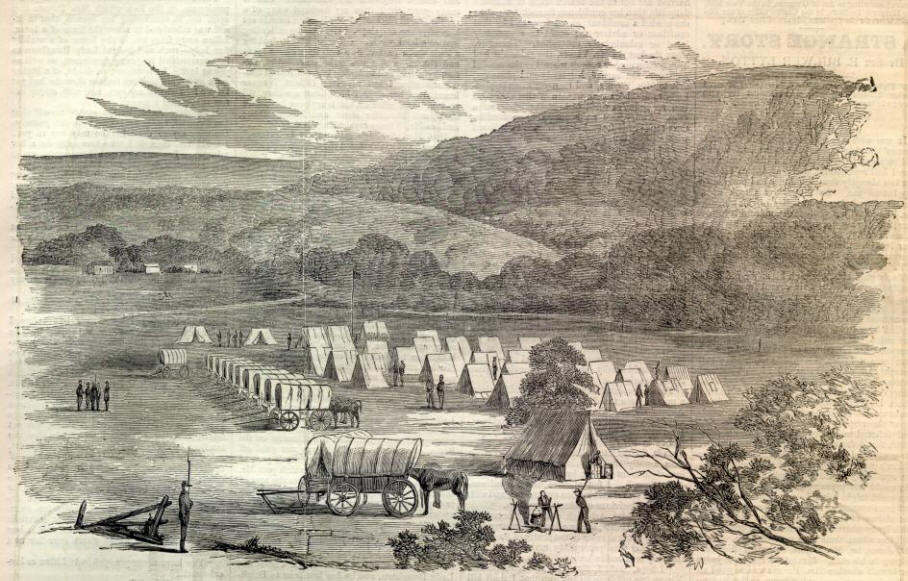 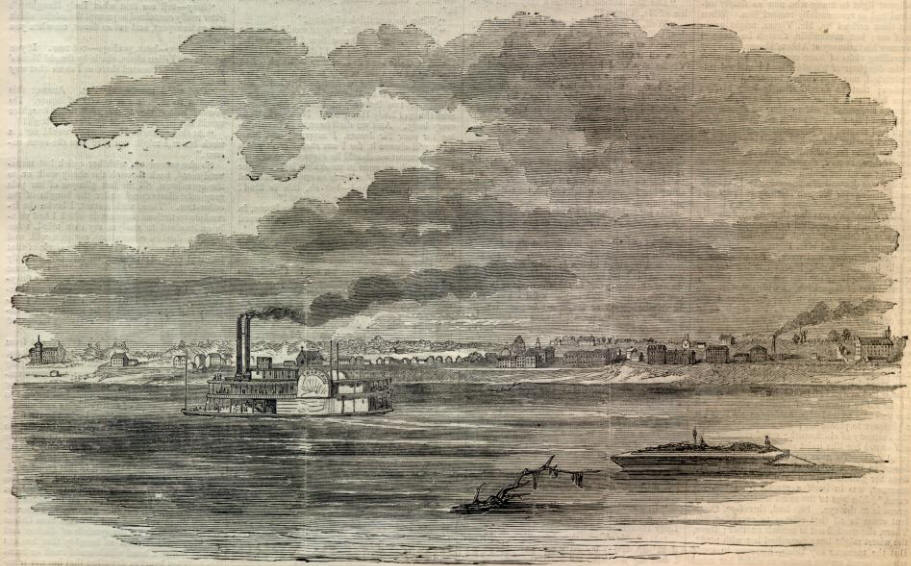 |
||||||||||||||||||||||||
|
|
||
|
|
Site Copyright 2003-2018 Son of the South. For Questions or comments about this collection, contact: paul@sonofthesouth.net |
|
|
Are you Scared and Confused? Read My Snake Story, a story of hope and encouragement, to help you face your fears. |
||
